Bruce Gary, Last updated: 2019.10.20 08 UT
My latest web page for "KIC846" is at "ts9": http://www.brucegary.net/ts9/
_____________________________________________________________________________________________________________________________________
Links on this web page
g', r' & i' Magnitude vs. date
V-mag and g'-mag vs. date
AAVSO light curve
List of observing sessions
My collaboration policy
References
Links on another web page
Comparison with AAVSO observations
Finder image showing new set of reference stars
HAO precision explained (580 ppm)
DASCH comment
Go back to 7th of 8 web pages (for dates 2018.08.12 to 2018.10.04)
Go back to 6th of 8 web pages (for dates 2018.02.25 to 2018.08.01)
Go back to 5th of 8 web pages (for dates 2017.11.13 to 2018.01.03)
Go back to 4th of 8 web pages (for dates 2017.09.21 to 2017.11.13)
Go back to 3rd of 8 web pages (for dates 2017.08.29 to 2017.09.18)
Go back to 2nd of 8 web pages (for dates 2017.06.18 to 2017.08.28)
Go back to 1st of 8 web pages (for dates 2014.05.02 to 2017.06.17)
Reference Star Quality Assessment (the 10 best stars out of 25 evaluated)
This is the 8th web pages devoted to my observations of Tabby's Star. When a web page has so many images that download times are long, a "split" is made and this is the latest one.
g', r' and i' Mag's vs. Date
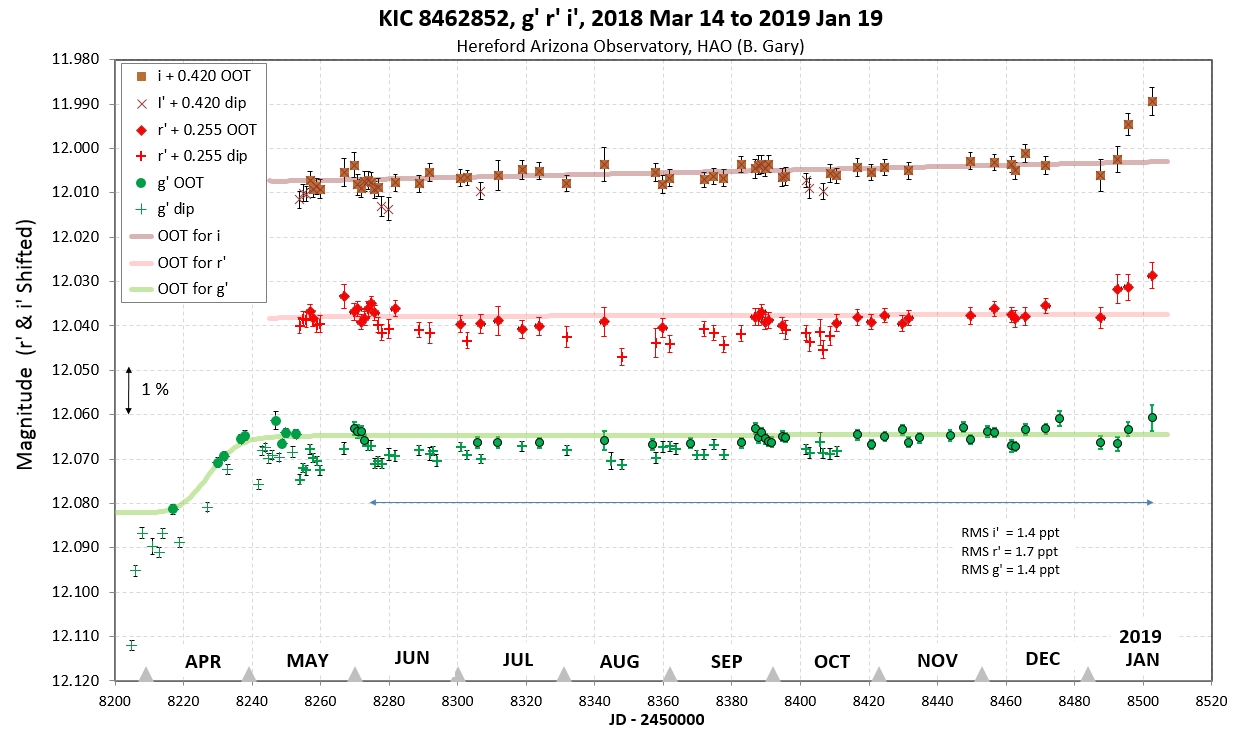
Figure 1. HAO g', r' and i'-magnitudes for the past 10 months. The "OOT only" trace since 2018 May is chosen to be "straight" in order to illustrate one interpretation, namely, that since May there has been no changes in OOT at g' and r' and a small brightening (~ 0.6 %) at i'-band lasting 8 months. (Don't believe the last 2 or 3 measurements showing a brightening - data quality at this part of the observing season is poor due to all measurements being at high air mass.)
V and g'-Mag vs. Date
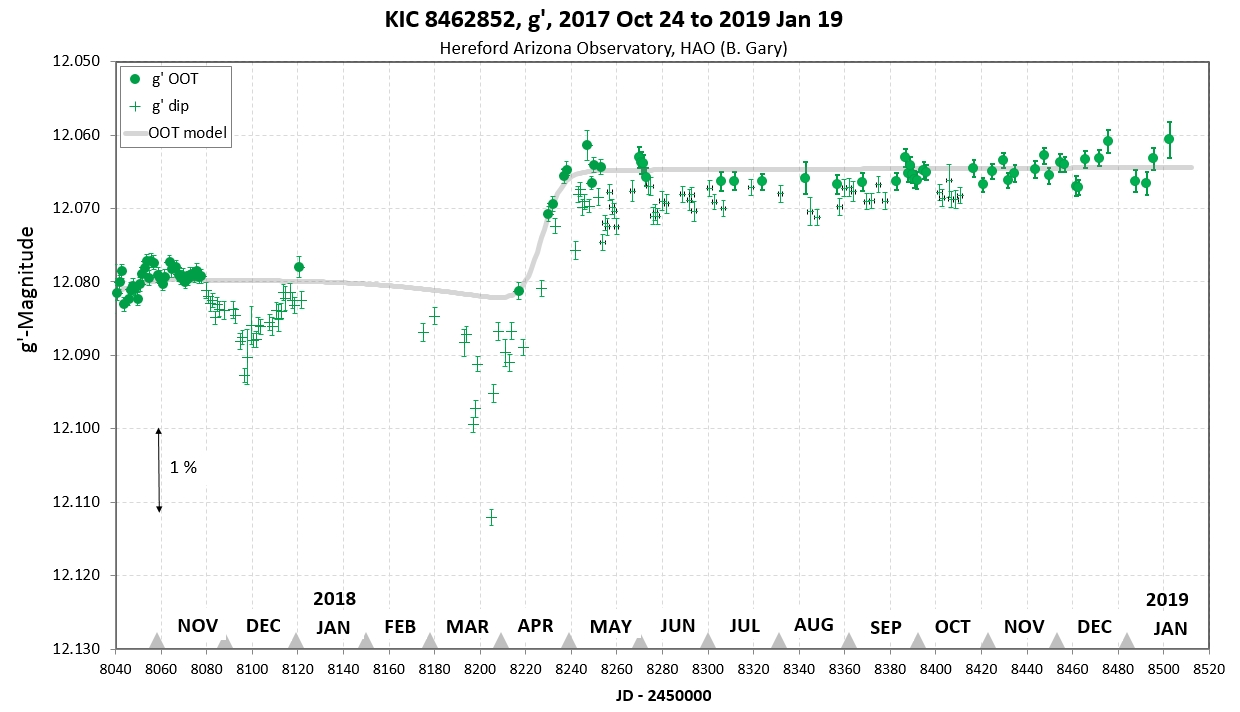
Figure 2. HAO magnitudes at g'-band for the past year. The "OOT only" trace is the second "U-Shaped" component needed to account for the upper-boundary of measurements (presumably the out-of-transit, or OOT, level). The OOT level since 2018 May was chosen to be constant.
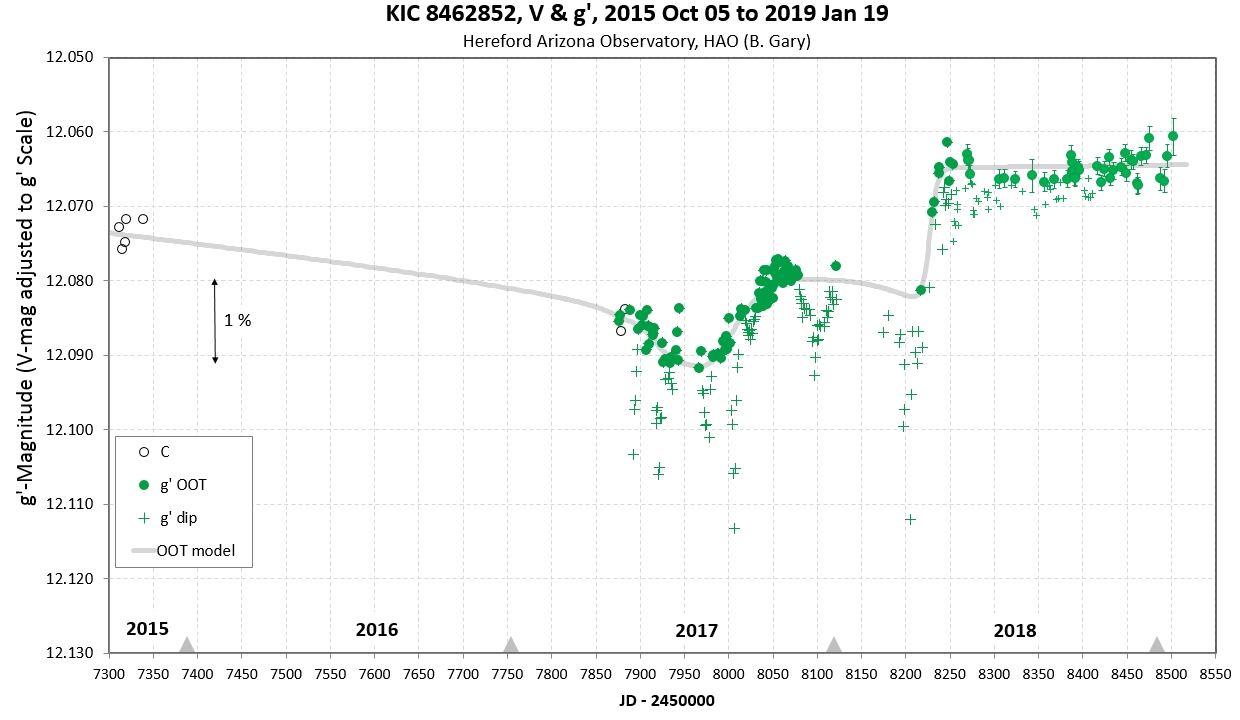
Figure 3a. This shows the last 2.5 years of C-, V- and g'-band HAO measurements (C- and V-mag's adjusted to match g'-mag's).
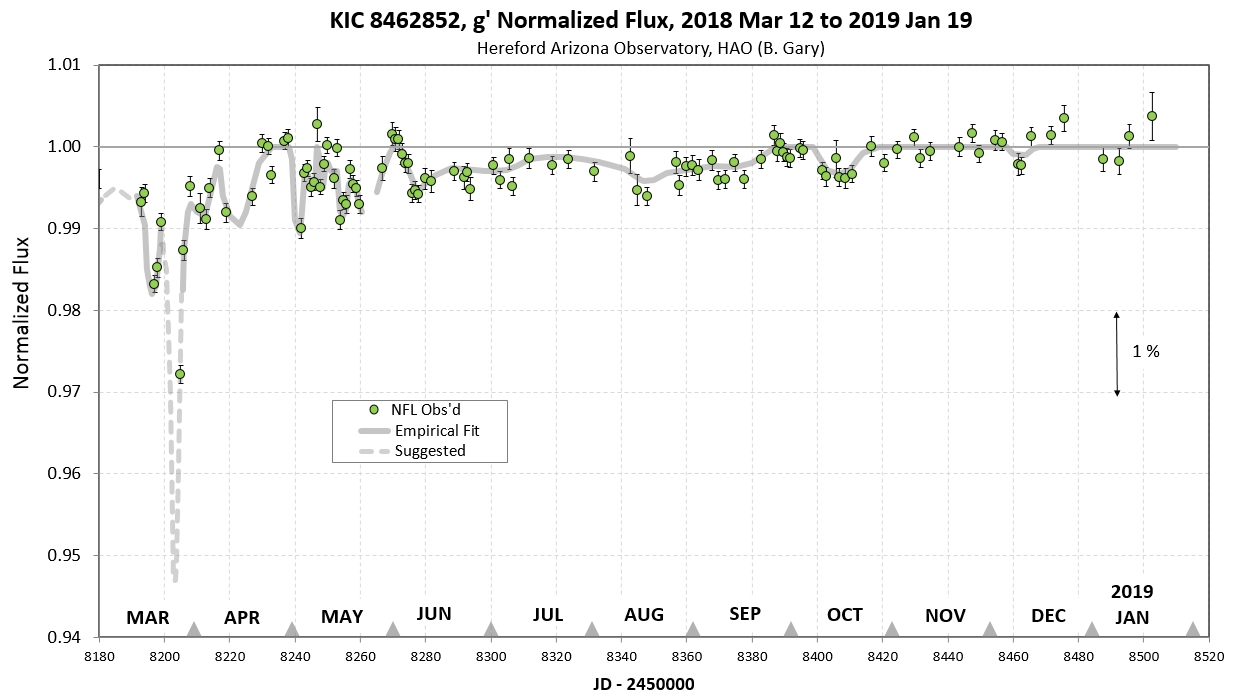
Figure 4c. Normalized flux light curve for the past 1/2 year, based on the g'-band measurements and the associated OOT model that does NOT include a fade since 2018 May.
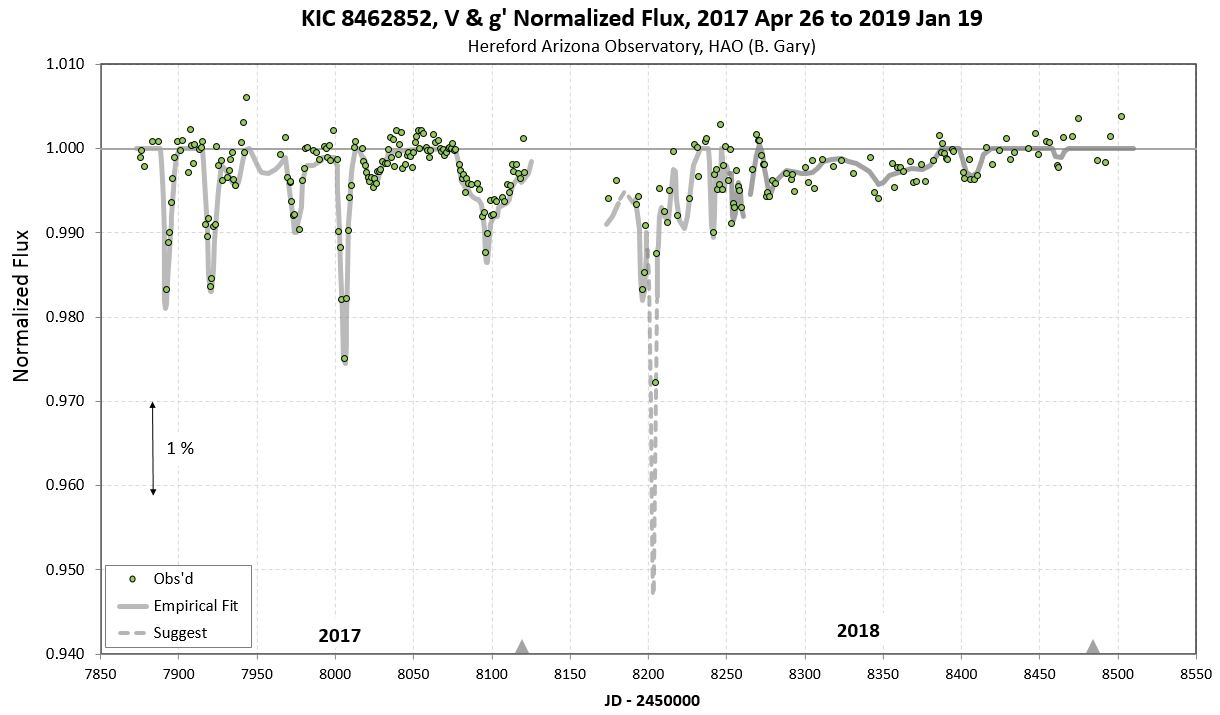
Figure 4d. A 1.4-year plot of "normalized flux" based on the previously displayed g'-band measurements and associated OOT model (with two U-shaped features). The HAO data for April are too sparse for showing dip structure well; the graphs in the next section do a better job of that sine they include AAVSO measurements. (The OOT model does NOT include a fade since 2018 May.)
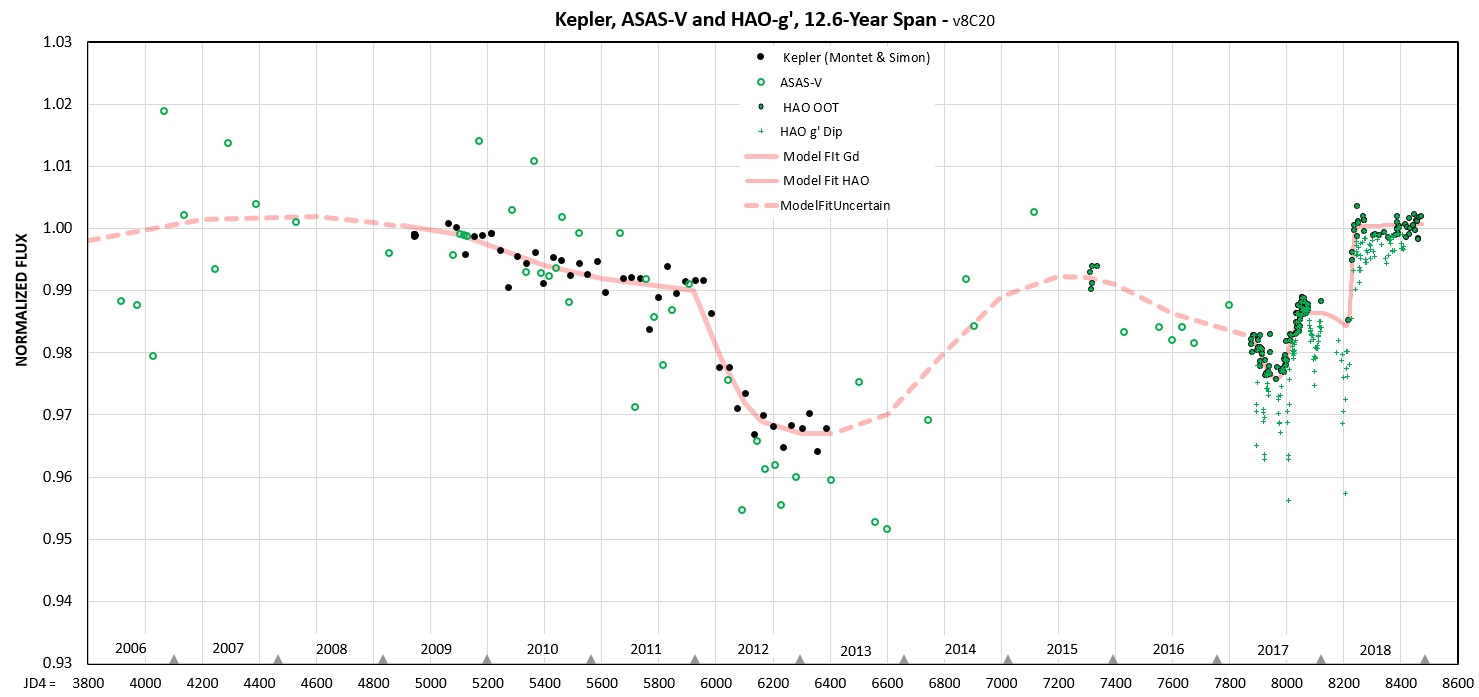
Figure 5. An attempt to combine 3 data sets for coverage of 12.6 years. I don't see any periodicity in this LC. Notice that there seems to be a "brightest level" (100 %) that was reached 10 years ago, that we're at now, and that we might have been at in early 2015. Note also that the short-timescale dips occur when the long-timescale brightness is low (e.g., during 2012, when Kepler was observing and 2017, when many ground-based observations were active). The deeper the long-timescale fade the deeper are the short-timescale dips; just a speculation (with an obvious physical interpretation).
AAVSO Light Curve
Rafik Bourne has kindly provided the following light curve based on (mostly) AAVSO data. They provide day-timescale temporal resolution.
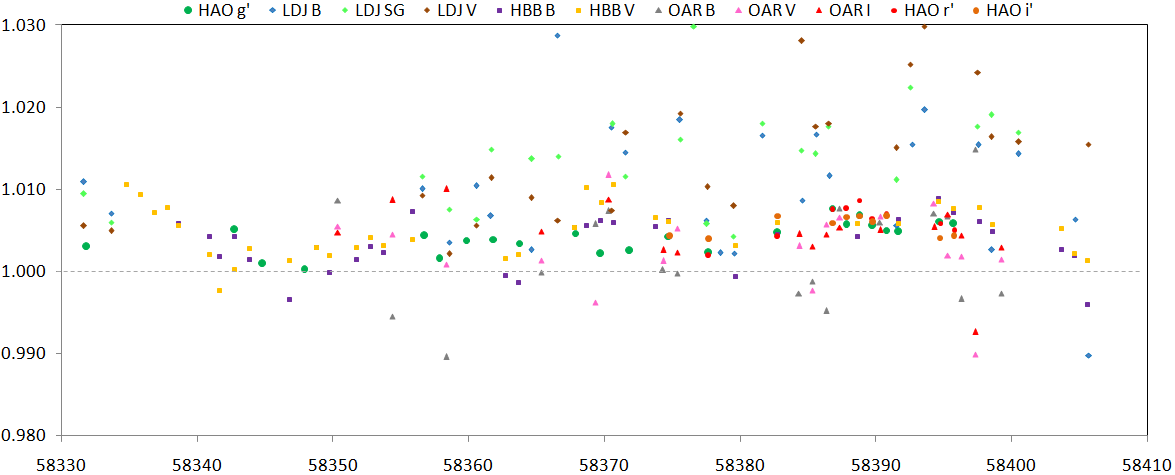
Figure 6a. AAVSO daily data (plus occasional HAO data, with arbitrary offsets for each observer and band) for the last 2.2 months. Posting date: 2018.10.06 02 UT
Links on this web page
g', r' & i' Magnitude vs. date
V-mag and g'-mag vs. date
AAVSO light curve
List of observing sessions
My collaboration policy
References
Links on another web page
Comparison with AAVSO observations
Finder image showing new set of reference stars
HAO precision explained (580 ppm)
DASCH comment
Go back to 7th of 8 web pages (for dates 2018.08.12 to 2018.10.04)
Go back to 6th of 8 web pages (for dates 2018.02.25 to 2018.08.01)
Go back to 5th of 8 web pages (for dates 2017.11.13 to 2018.01.03)
Go back to 4th of 8 web pages (for dates 2017.09.21 to 2017.11.13)
Go back to 3rd of 8 web pages (for dates 2017.08.29 to 2017.09.18)
Go back to 2nd of 8 web pages (for dates 2017.06.18 to 2017.08.28)
Go back to 1st of 8 web pages (for dates 2014.05.02 to 2017.06.17)
Reference Star Quality Assessment (the 10 best stars out of 25 evaluated)
This is the 8th web pages devoted to my observations of Tabby's Star. When a web page has so many images that download times are long, a "split" is made and this is the latest one.
g', r' and i' Mag's vs. Date

Figure 1. HAO g', r' and i'-magnitudes for the past 10 months. The "OOT only" trace since 2018 May is chosen to be "straight" in order to illustrate one interpretation, namely, that since May there has been no changes in OOT at g' and r' and a small brightening (~ 0.6 %) at i'-band lasting 8 months. (Don't believe the last 2 or 3 measurements showing a brightening - data quality at this part of the observing season is poor due to all measurements being at high air mass.)
V and g'-Mag vs. Date

Figure 2. HAO magnitudes at g'-band for the past year. The "OOT only" trace is the second "U-Shaped" component needed to account for the upper-boundary of measurements (presumably the out-of-transit, or OOT, level). The OOT level since 2018 May was chosen to be constant.

Figure 3a. This shows the last 2.5 years of C-, V- and g'-band HAO measurements (C- and V-mag's adjusted to match g'-mag's).

Figure 4c. Normalized flux light curve for the past 1/2 year, based on the g'-band measurements and the associated OOT model that does NOT include a fade since 2018 May.

Figure 4d. A 1.4-year plot of "normalized flux" based on the previously displayed g'-band measurements and associated OOT model (with two U-shaped features). The HAO data for April are too sparse for showing dip structure well; the graphs in the next section do a better job of that sine they include AAVSO measurements. (The OOT model does NOT include a fade since 2018 May.)

Figure 5. An attempt to combine 3 data sets for coverage of 12.6 years. I don't see any periodicity in this LC. Notice that there seems to be a "brightest level" (100 %) that was reached 10 years ago, that we're at now, and that we might have been at in early 2015. Note also that the short-timescale dips occur when the long-timescale brightness is low (e.g., during 2012, when Kepler was observing and 2017, when many ground-based observations were active). The deeper the long-timescale fade the deeper are the short-timescale dips; just a speculation (with an obvious physical interpretation).
AAVSO Light Curve
Rafik Bourne has kindly provided the following light curve based on (mostly) AAVSO data. They provide day-timescale temporal resolution.

Figure 6a. AAVSO daily data (plus occasional HAO data, with arbitrary offsets for each observer and band) for the last 2.2 months. Posting date: 2018.10.06 02 UT
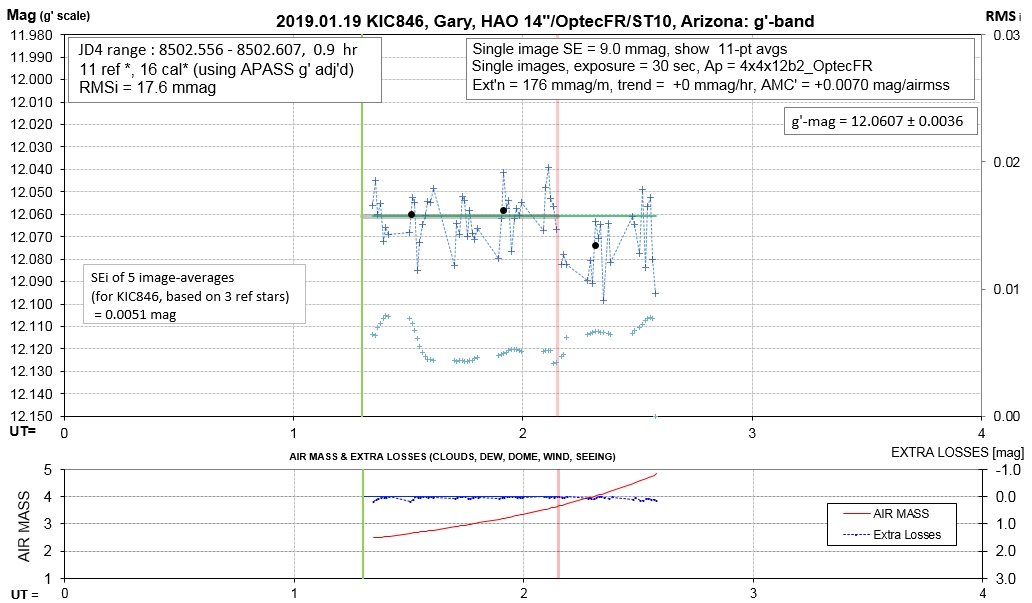
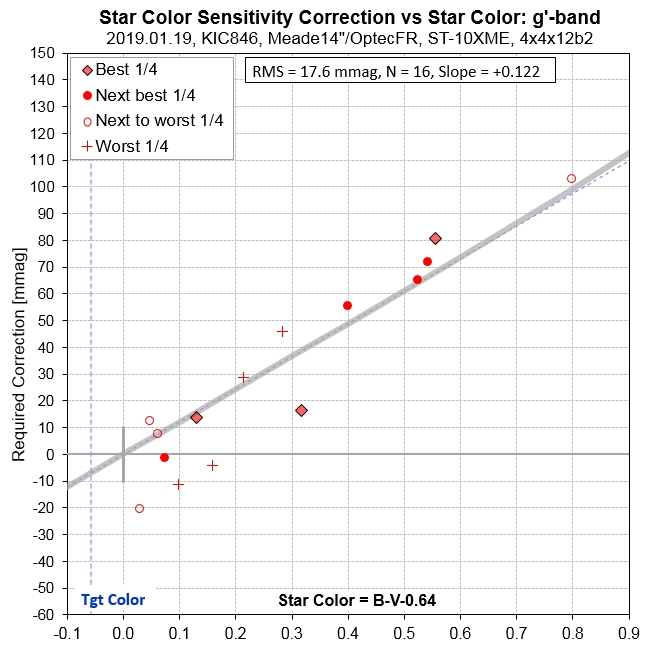
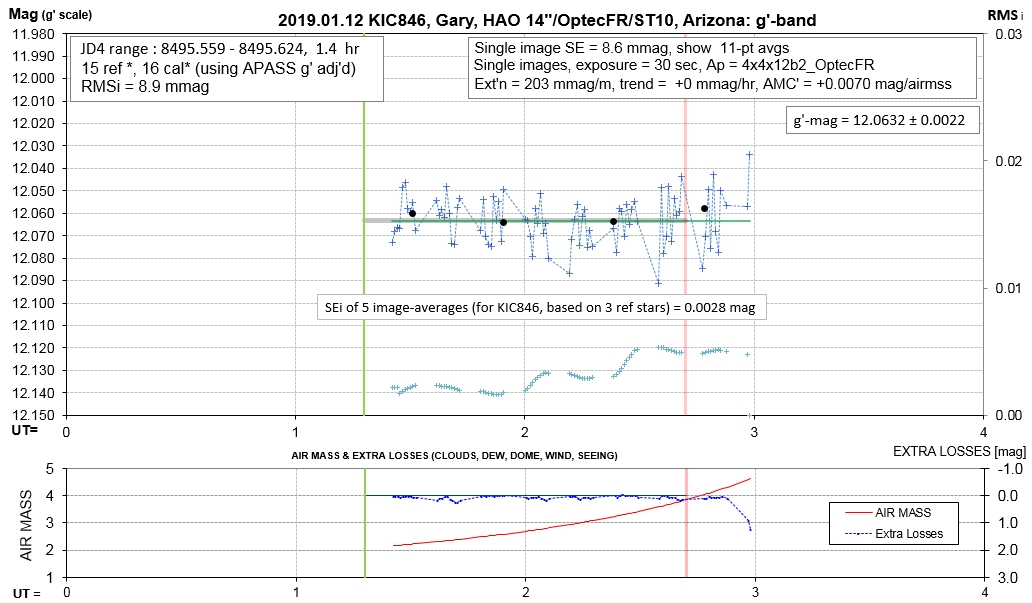
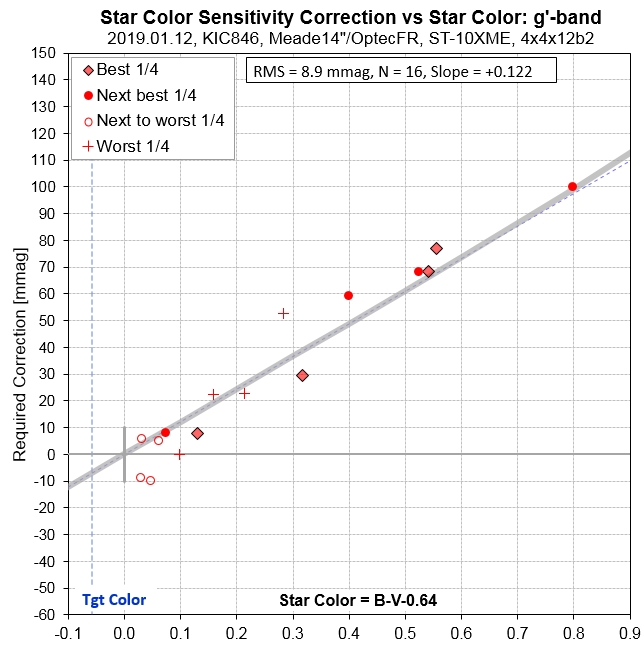
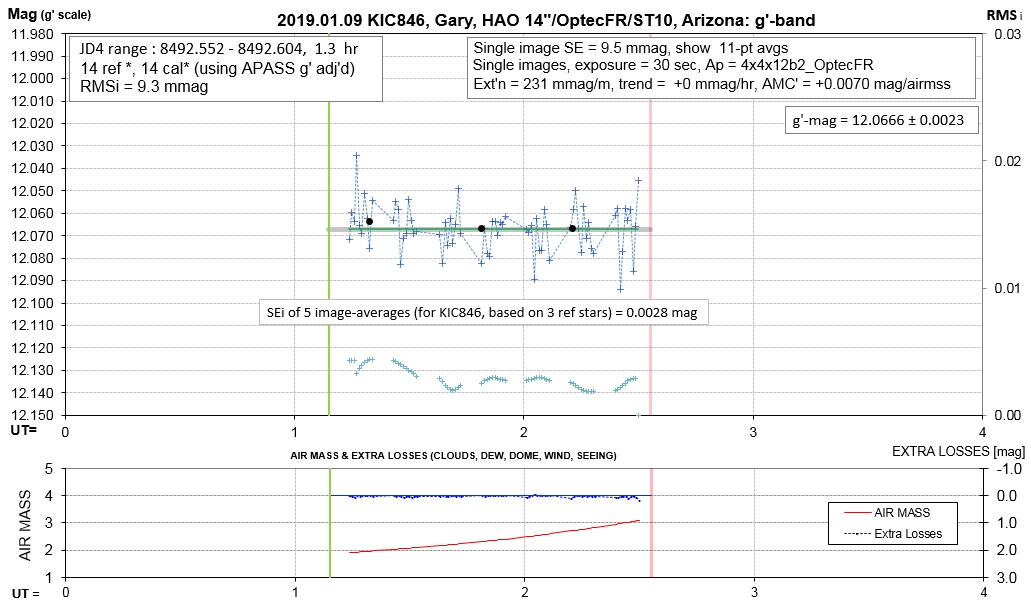
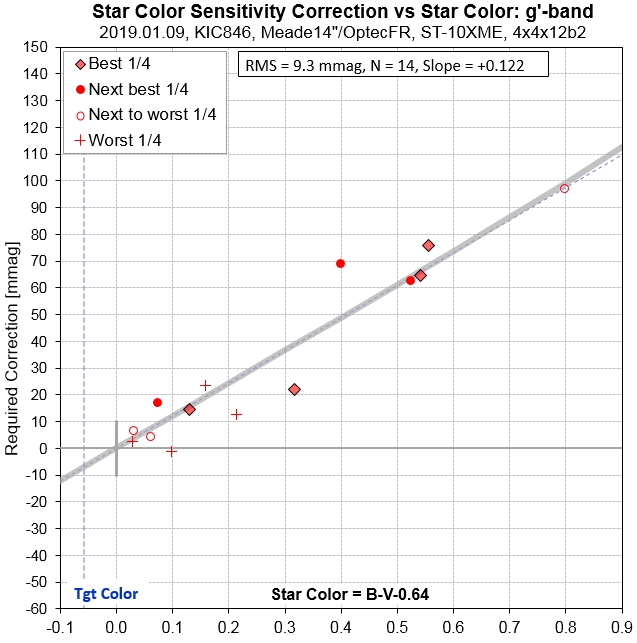
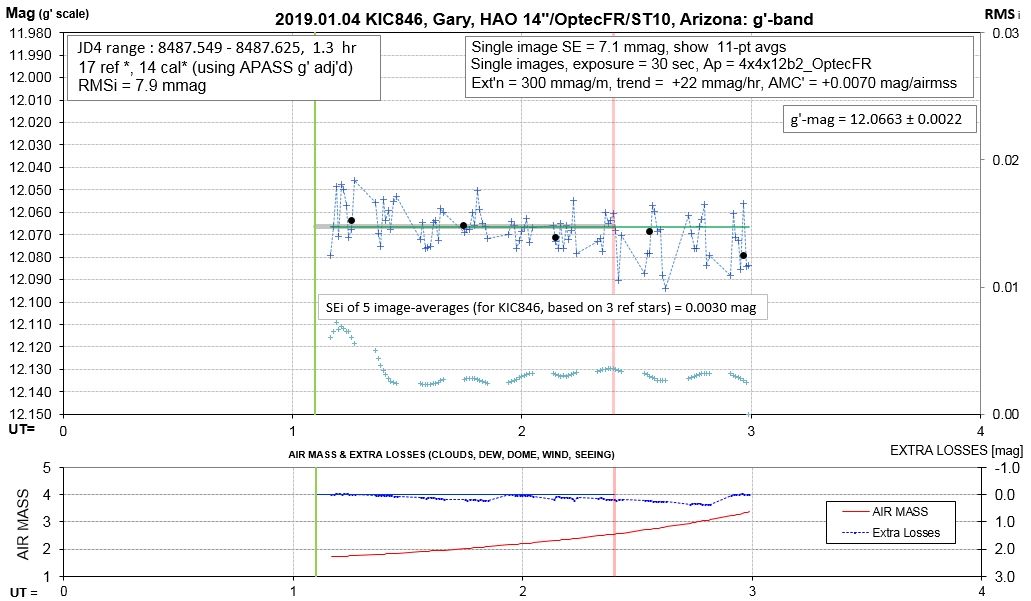
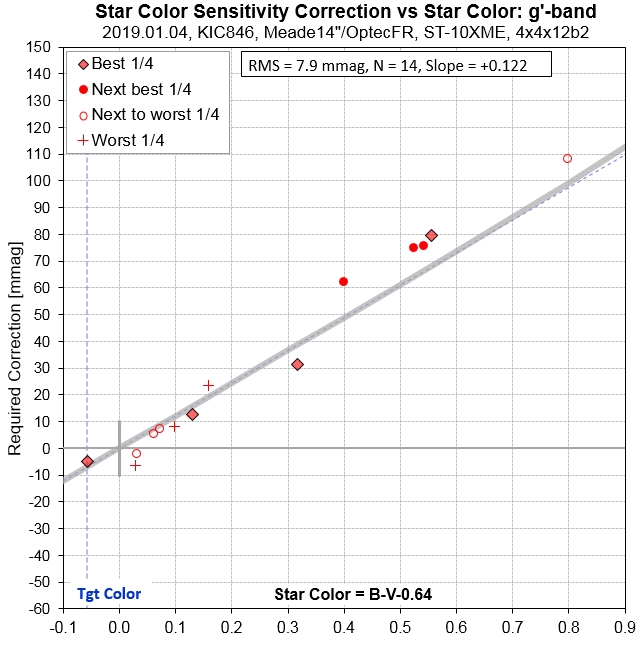

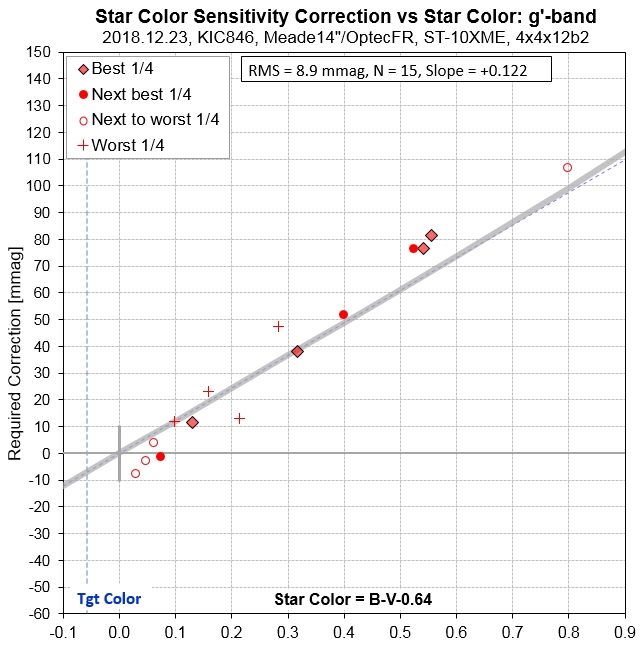 bad!
bad!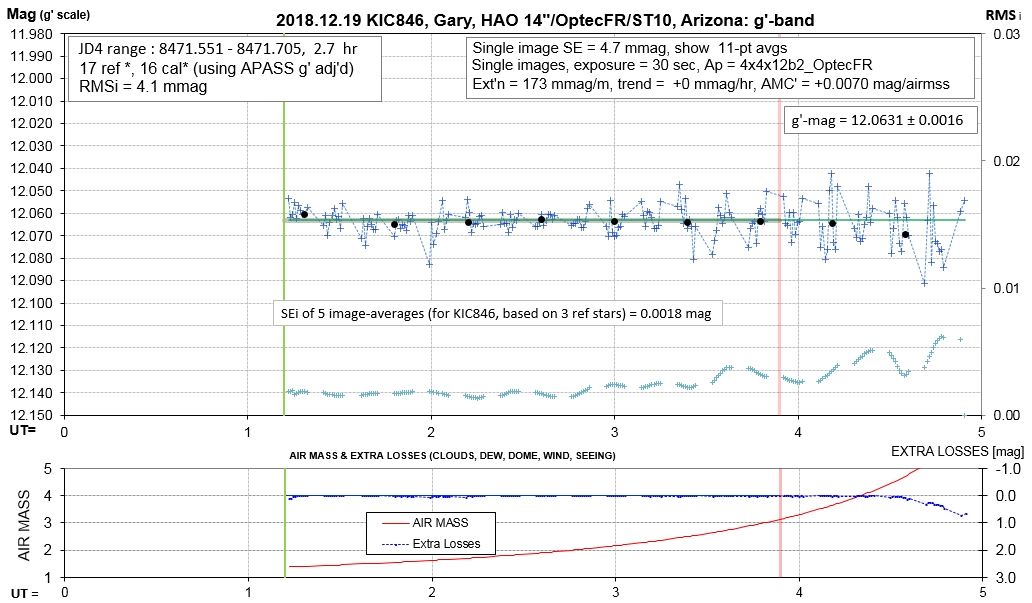
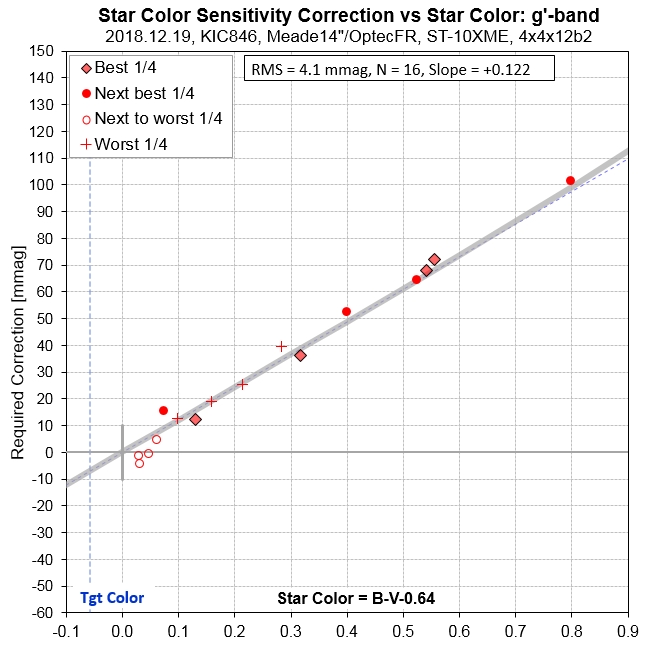
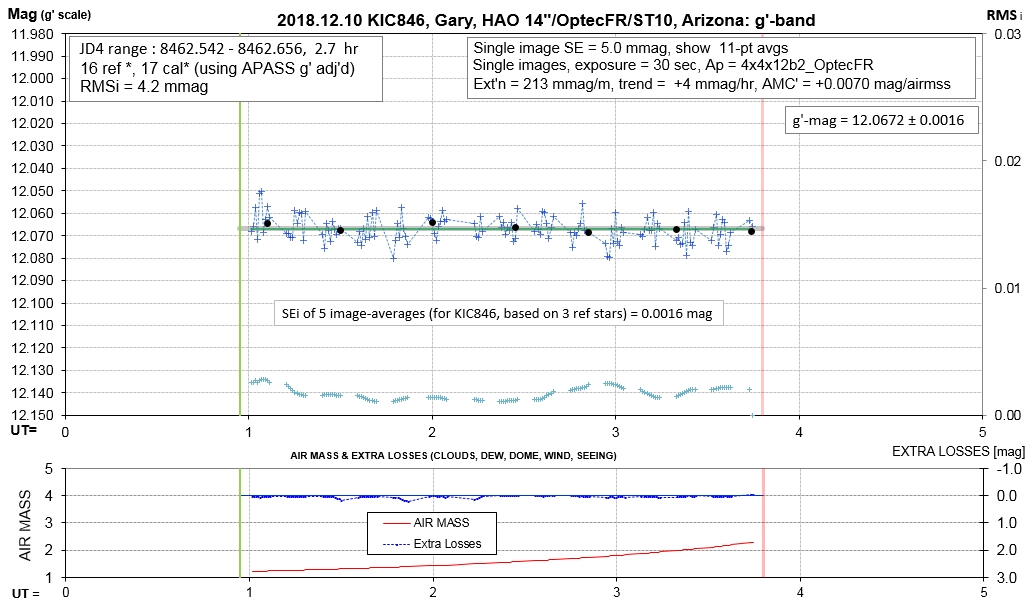
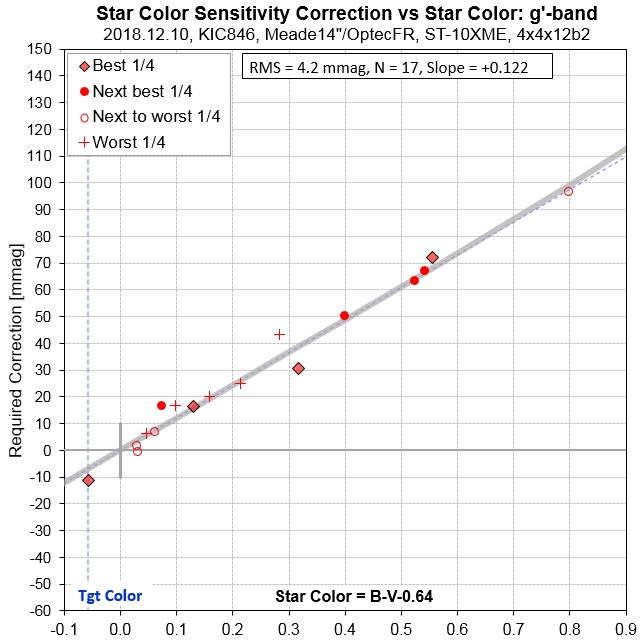
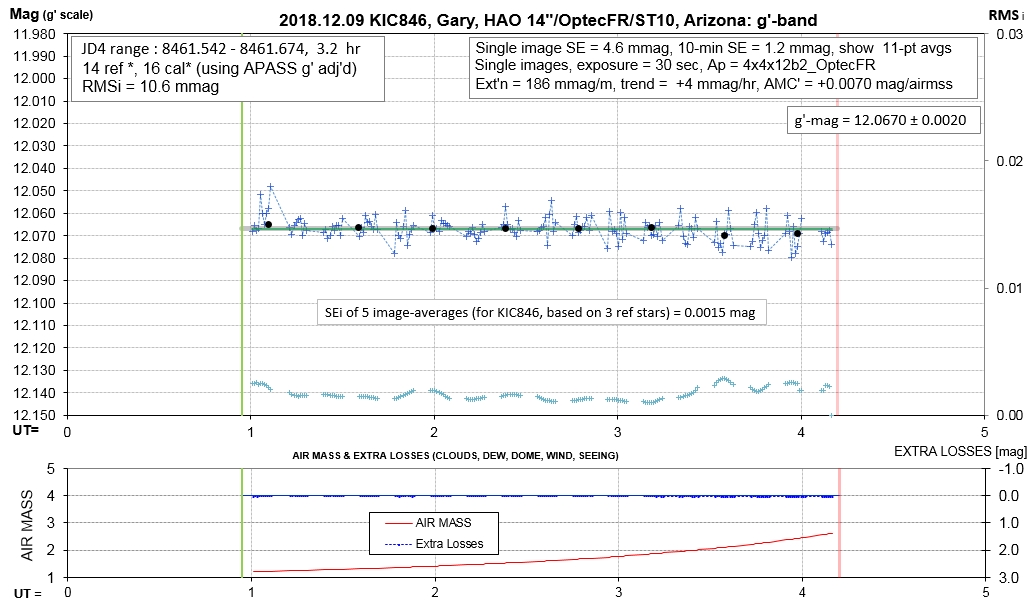
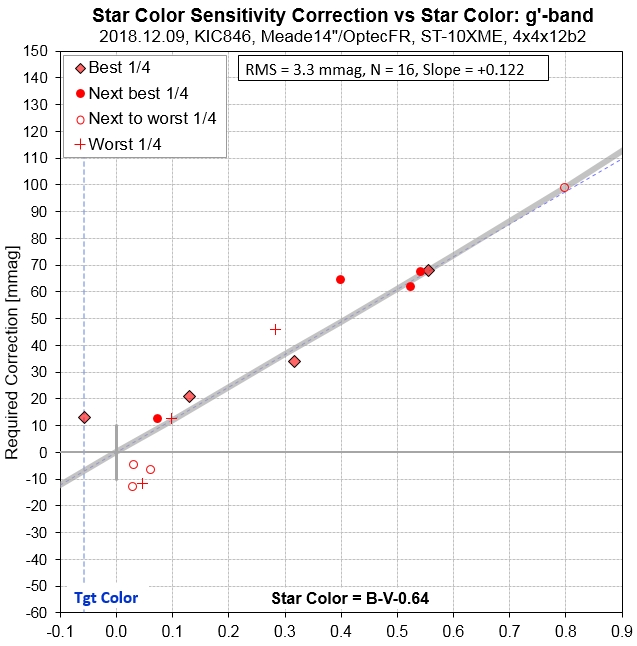
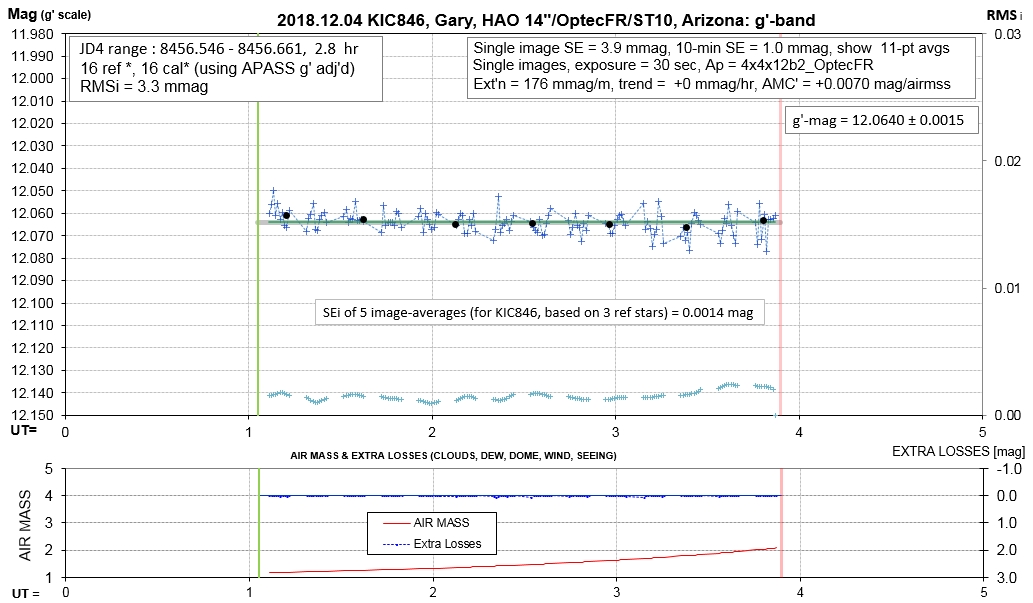
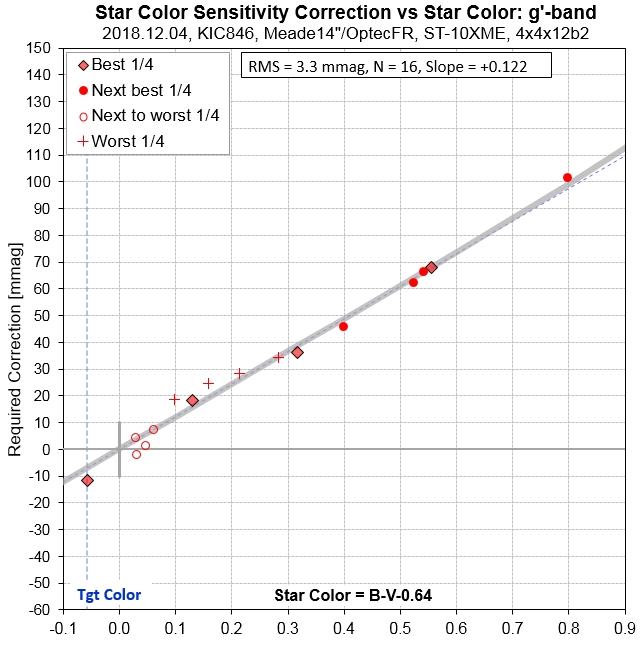
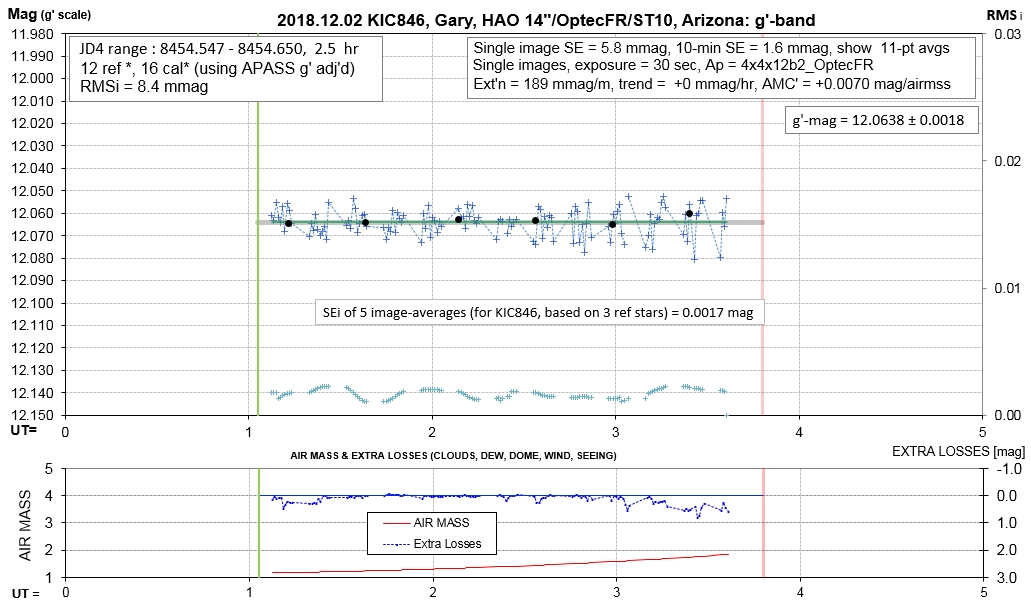
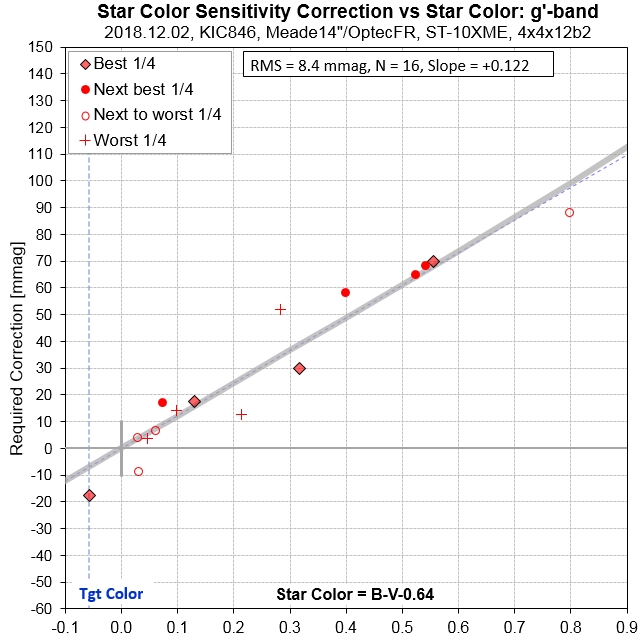
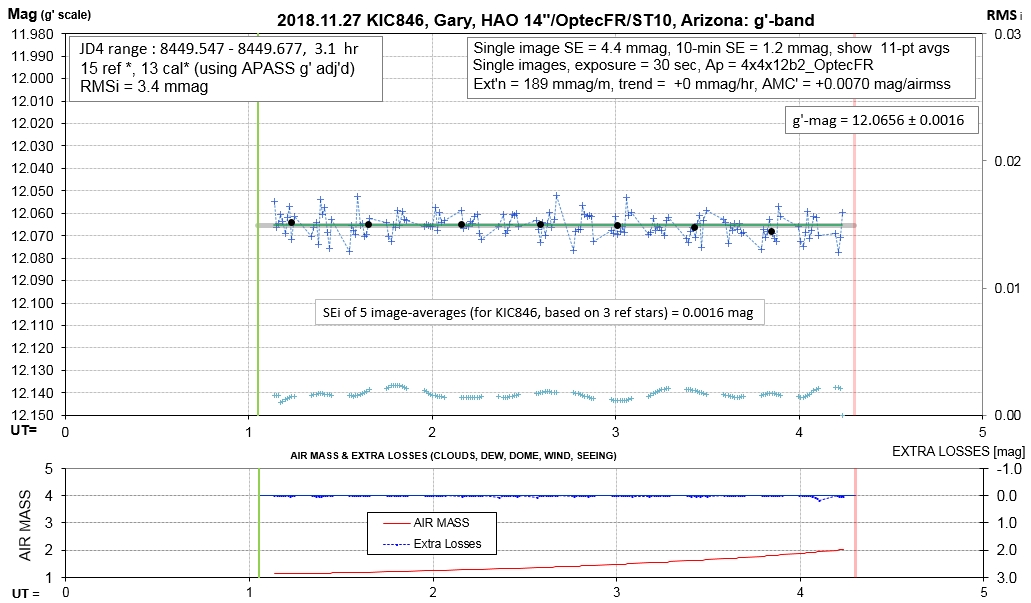
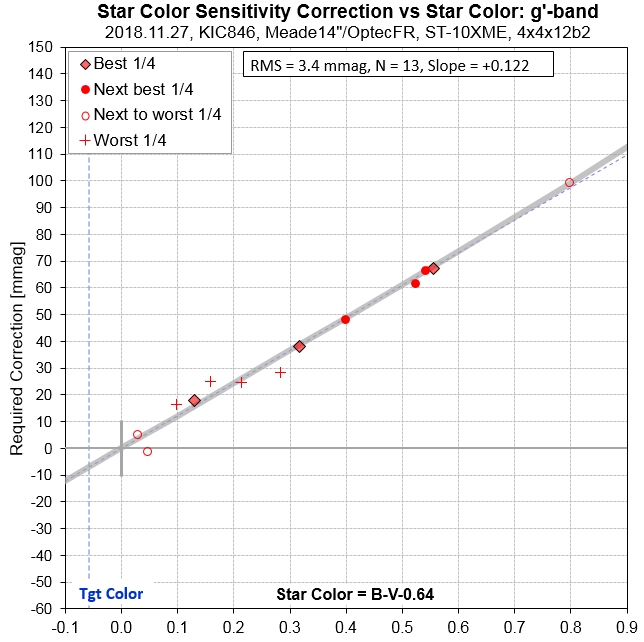
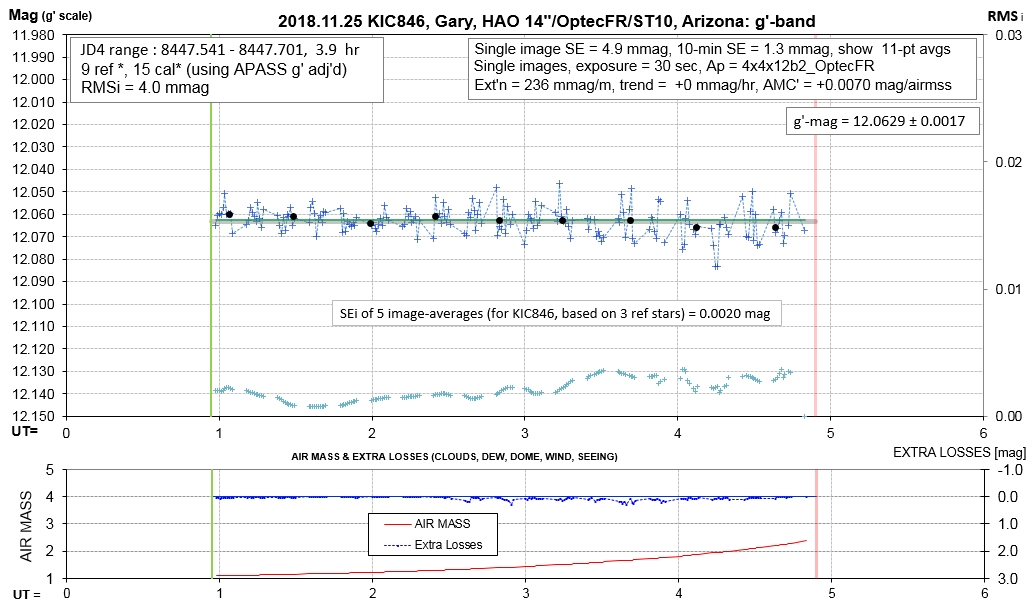
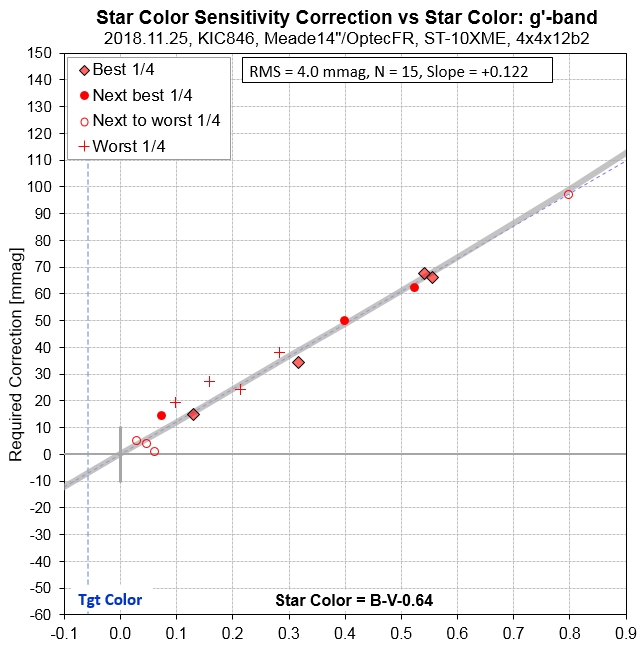
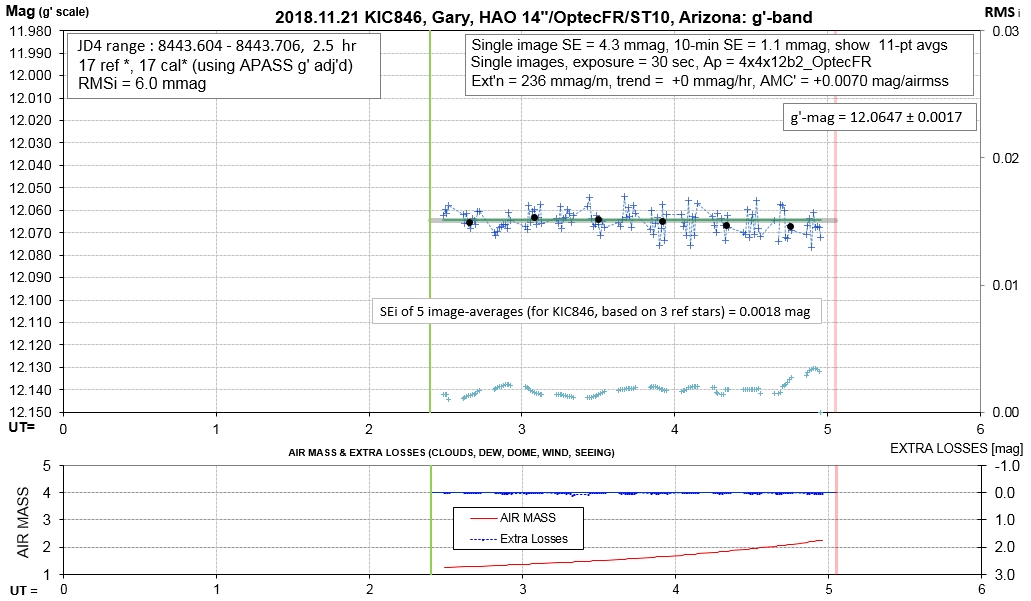
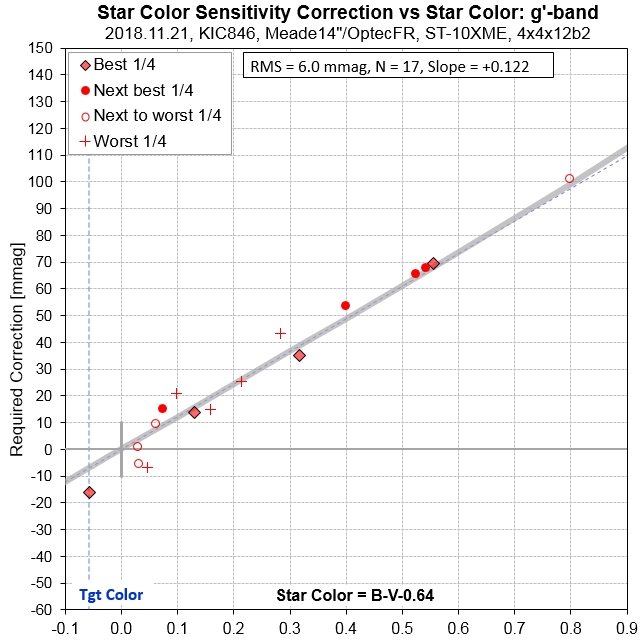
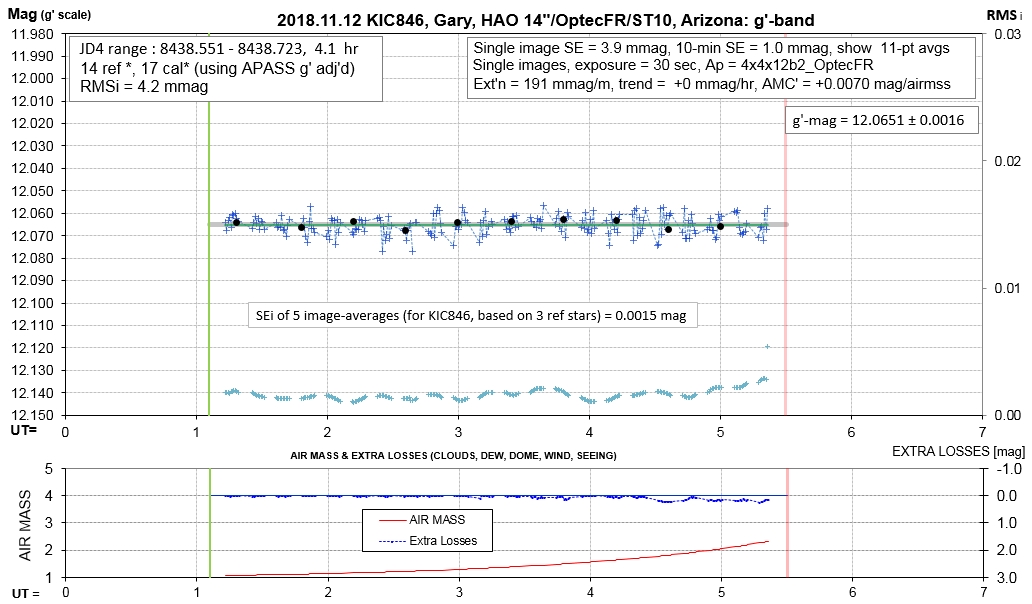
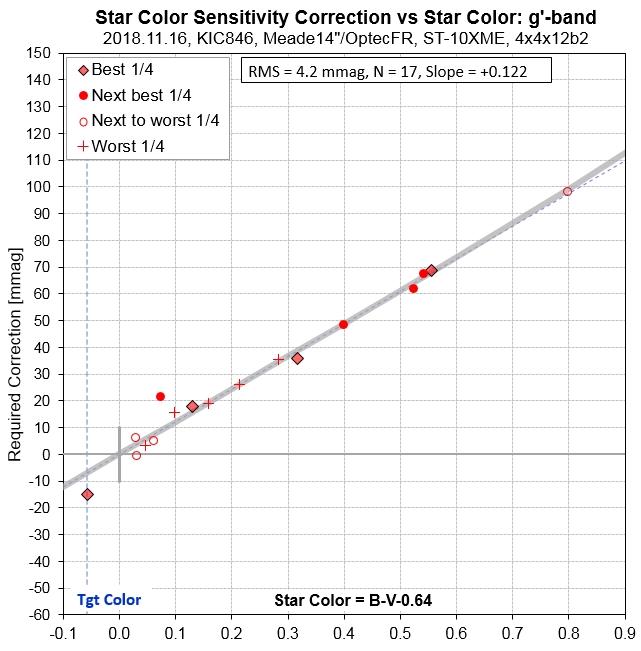
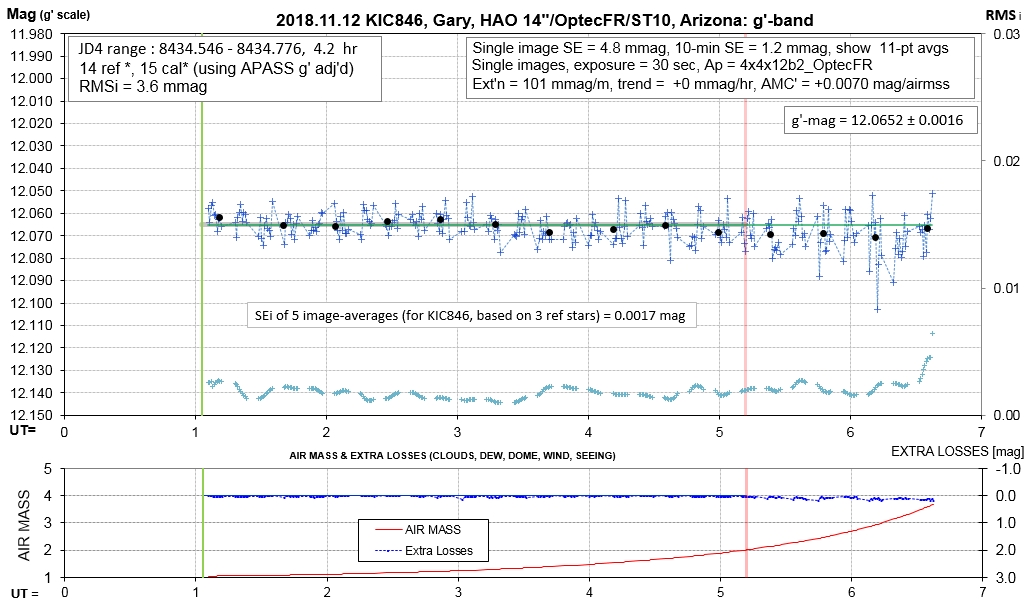
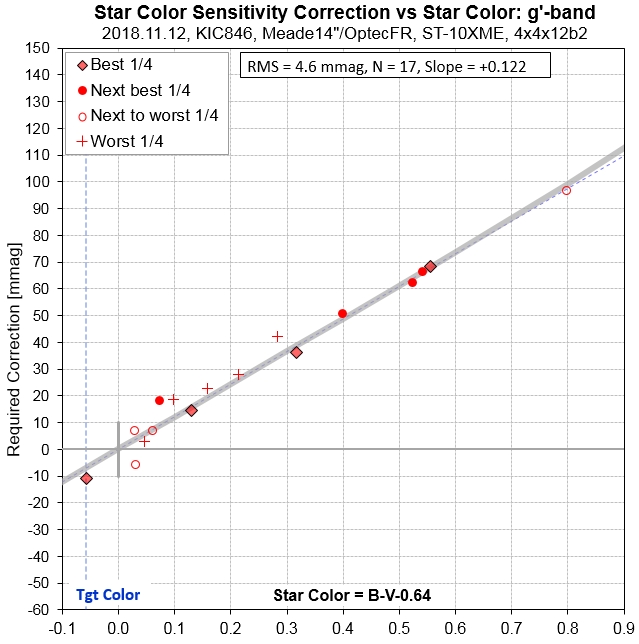
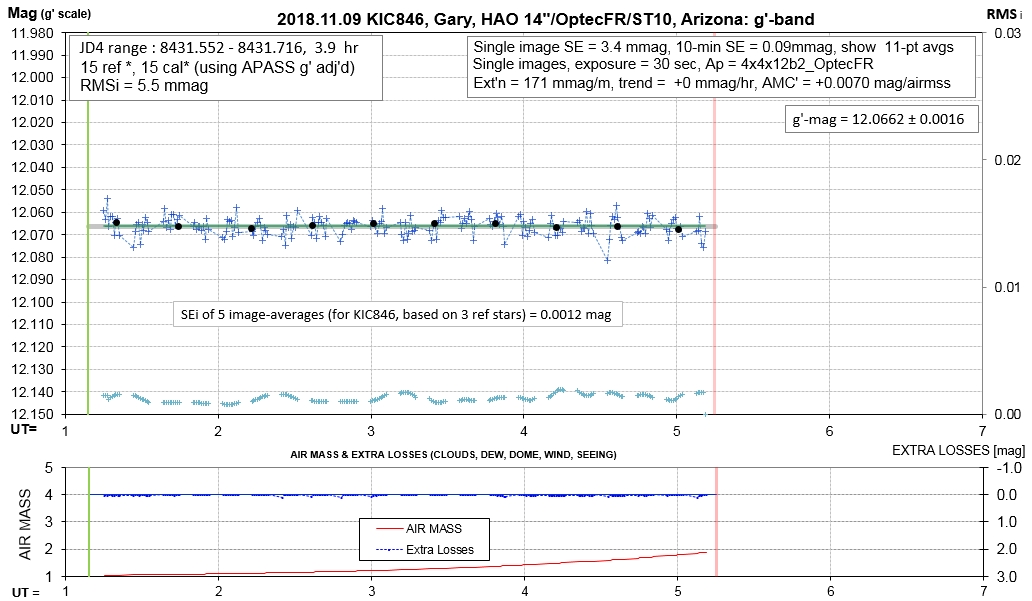
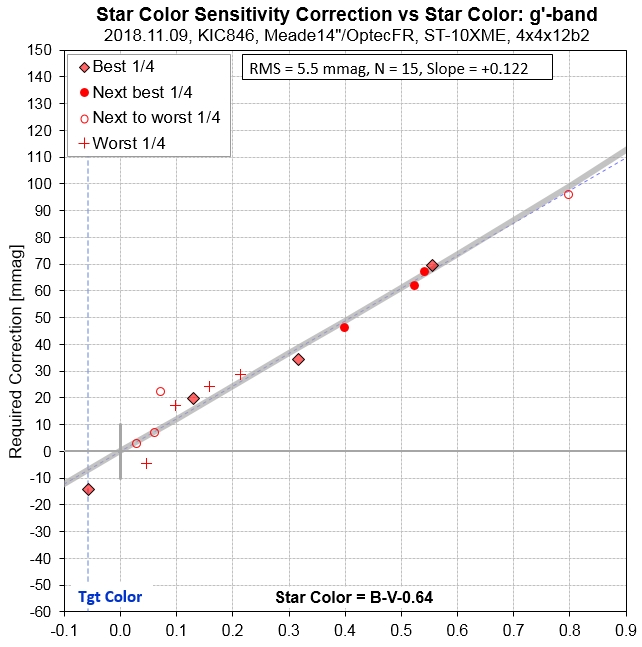
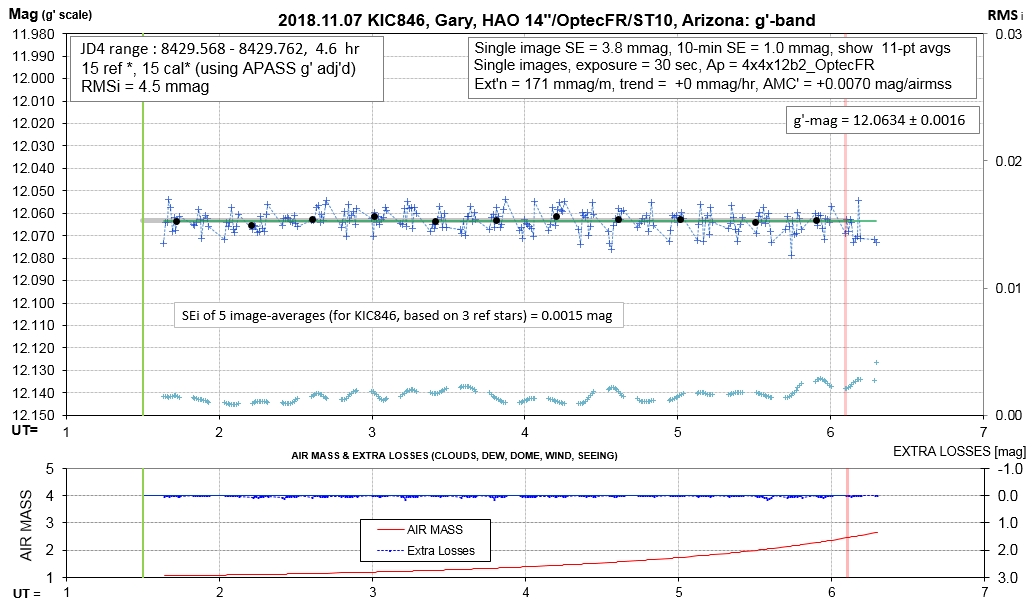
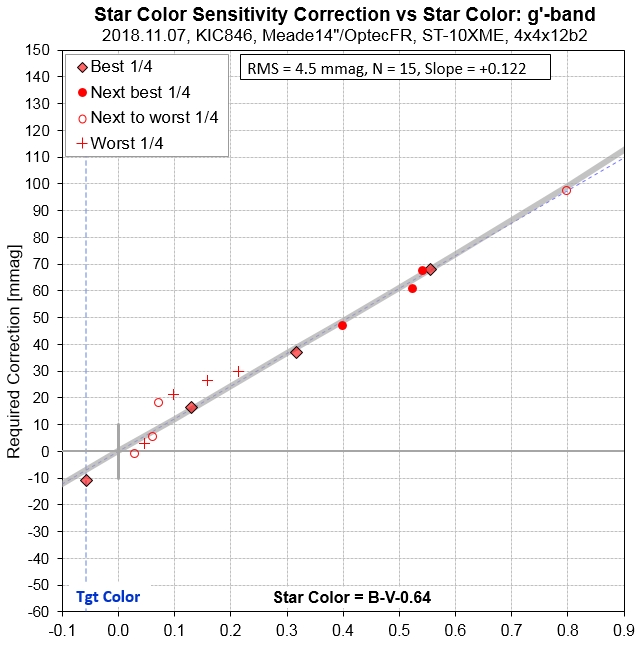
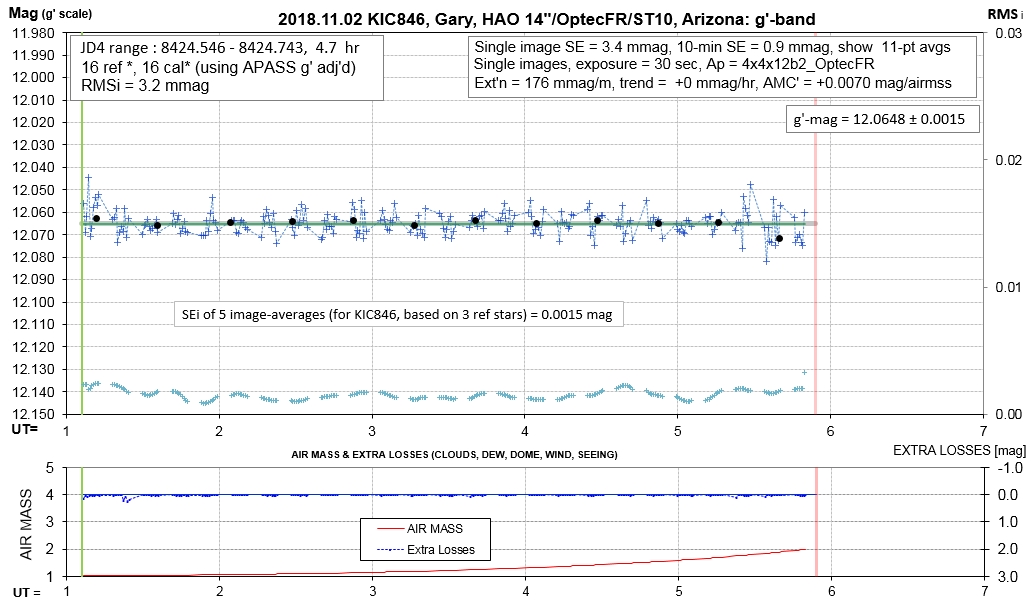
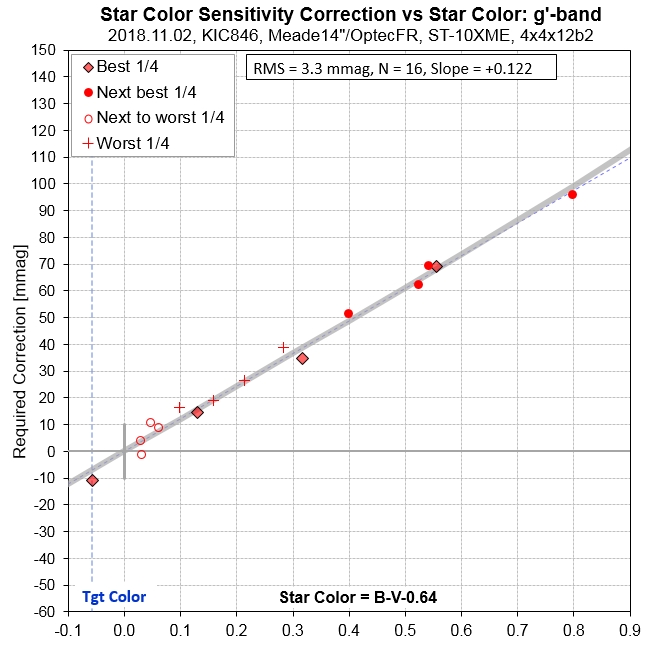
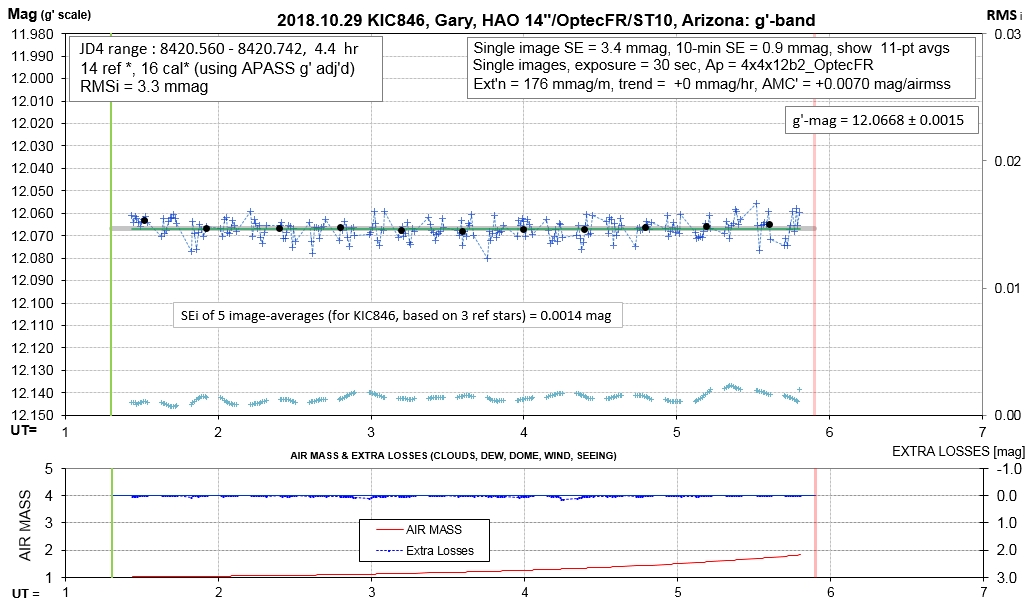
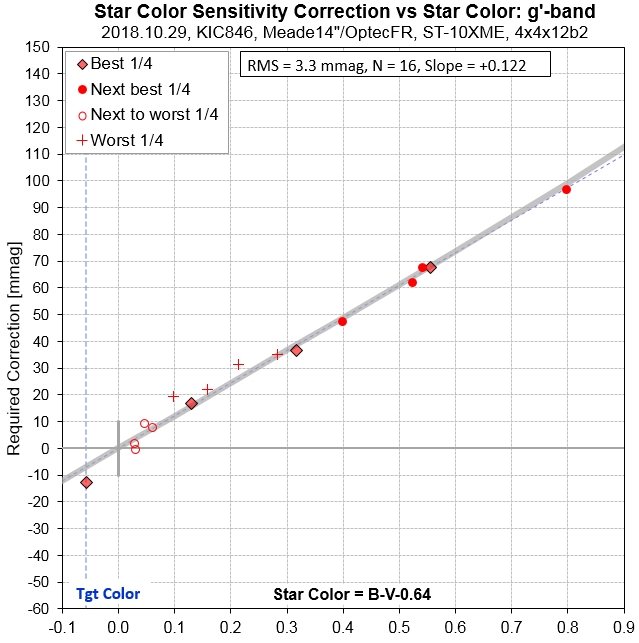
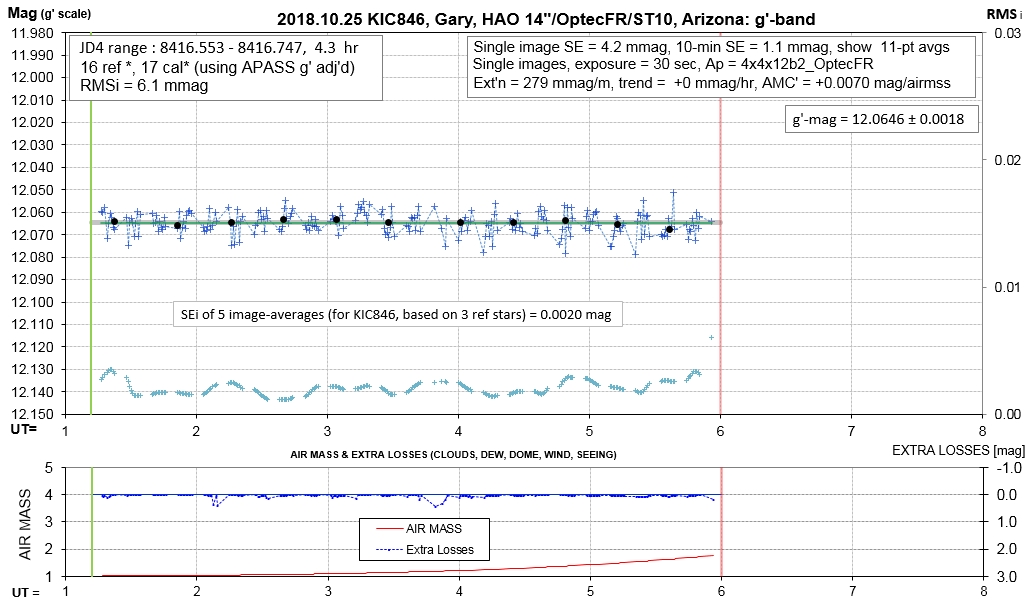
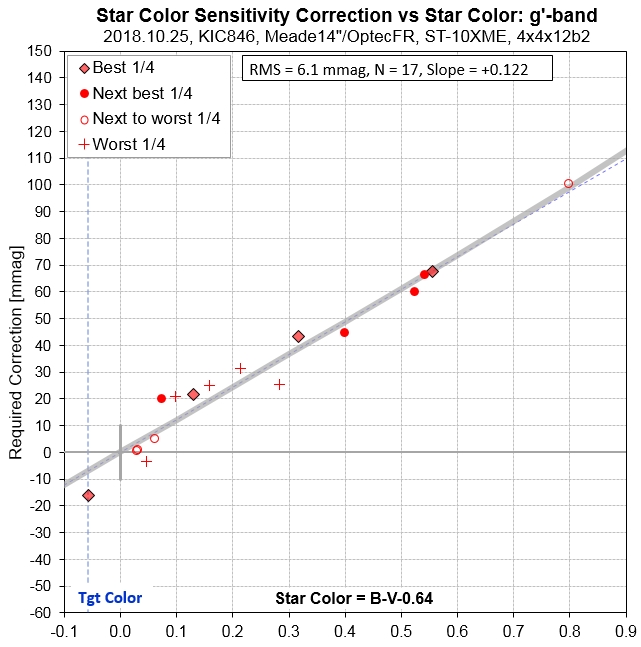
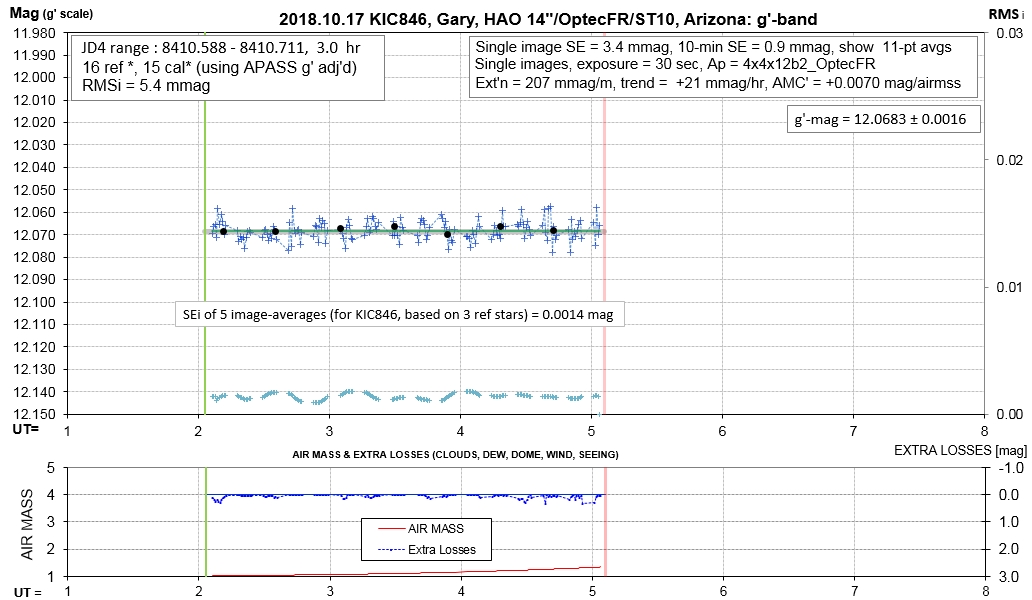
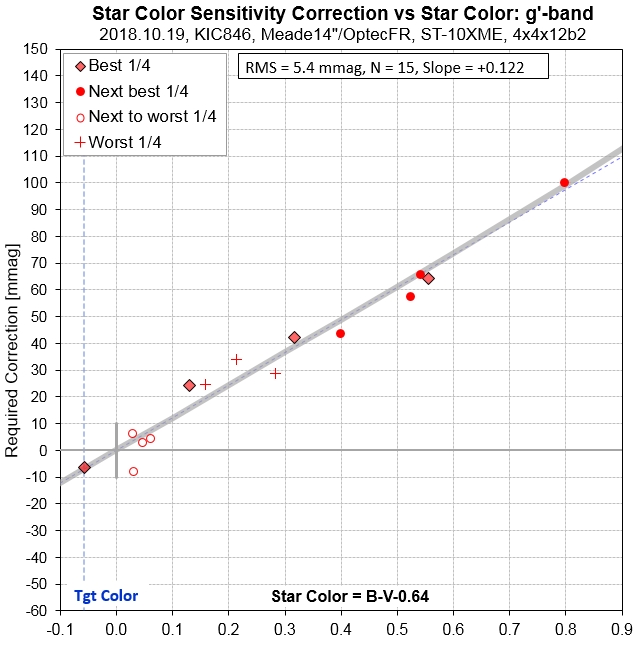
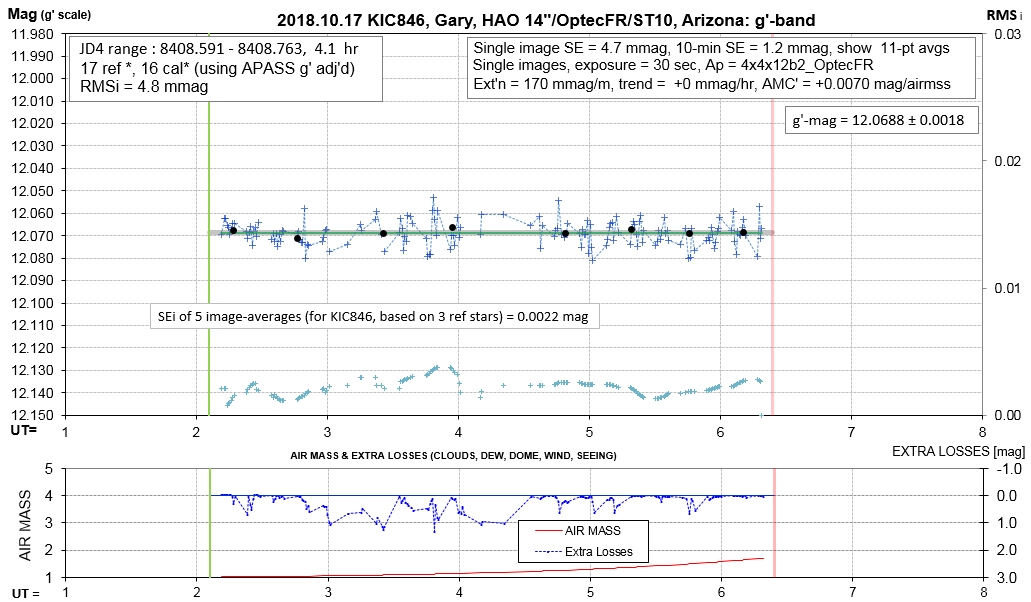
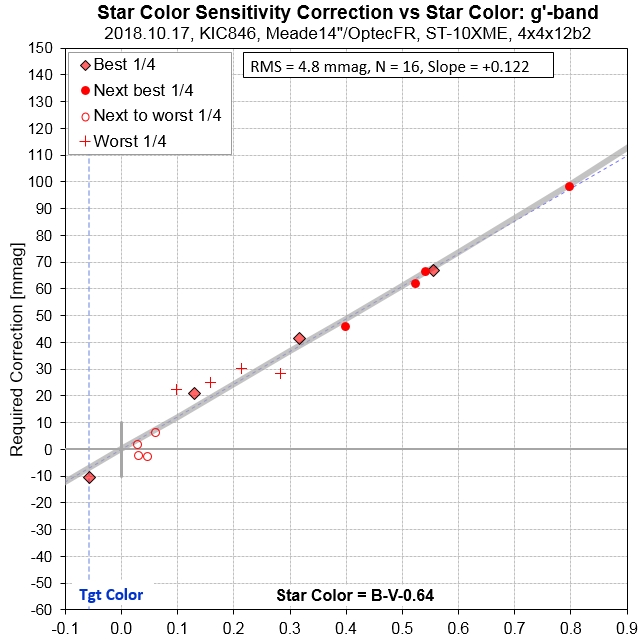
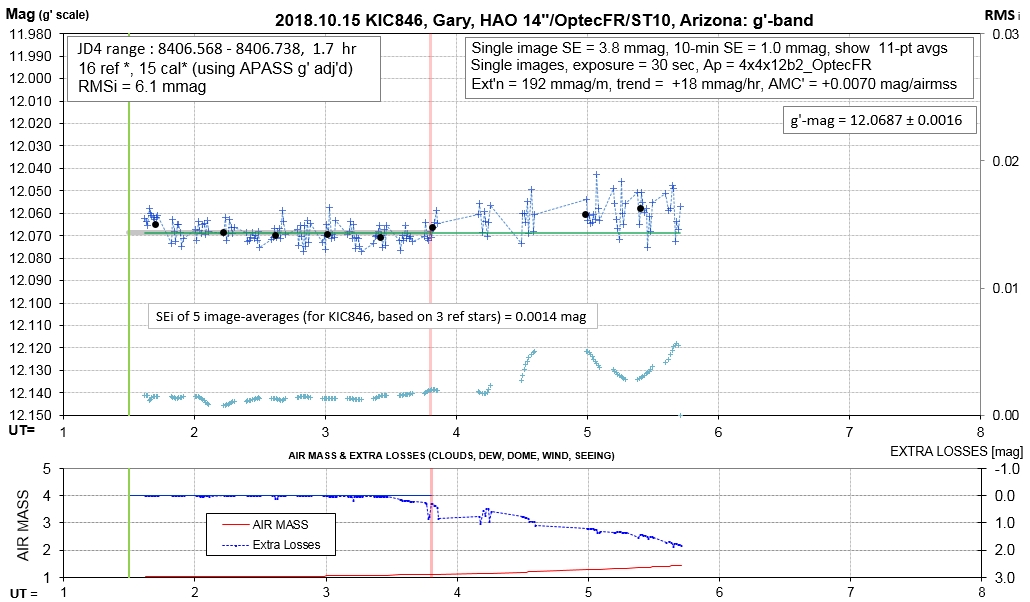
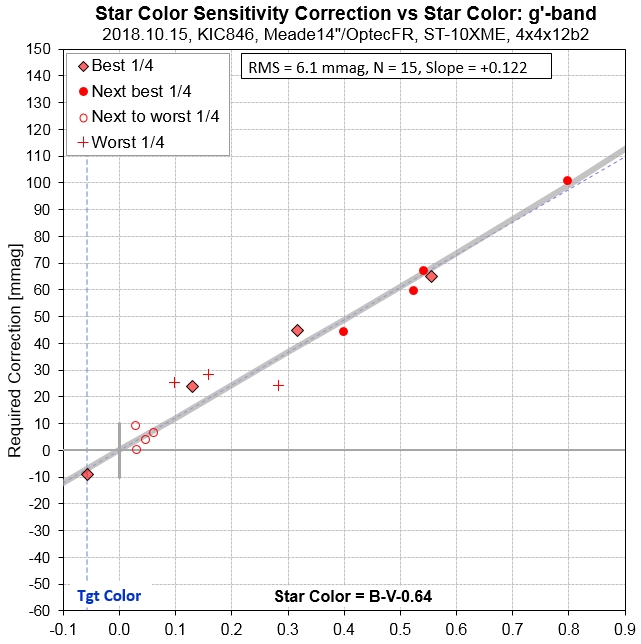
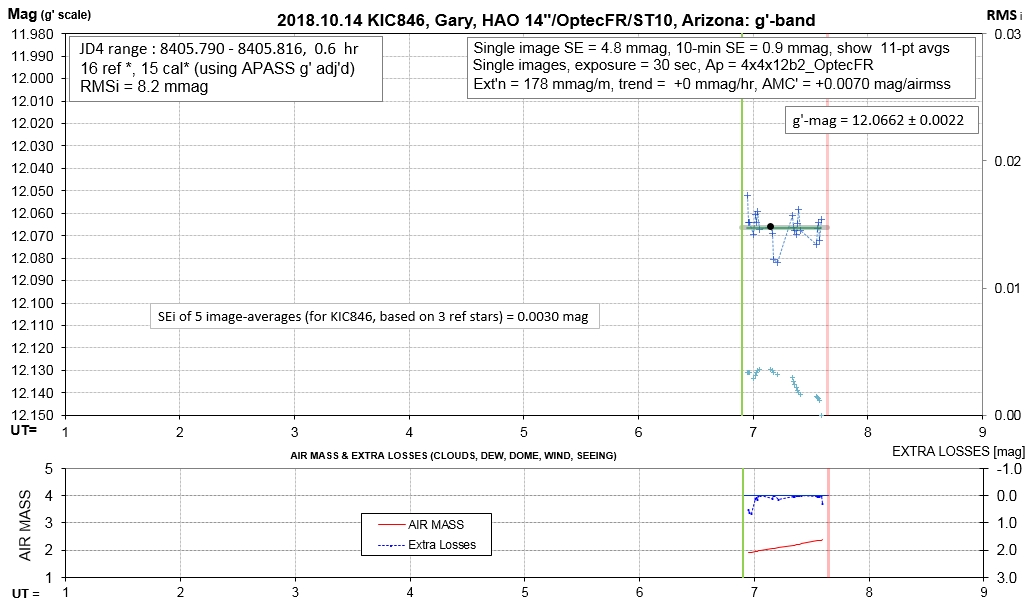
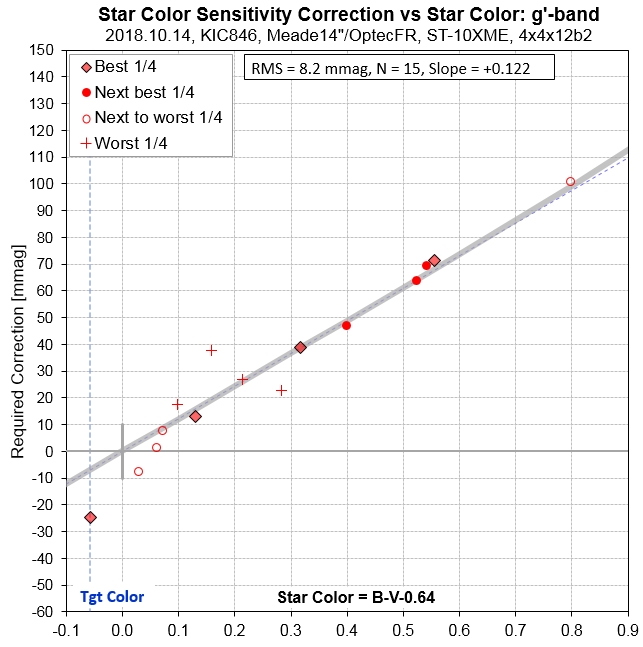
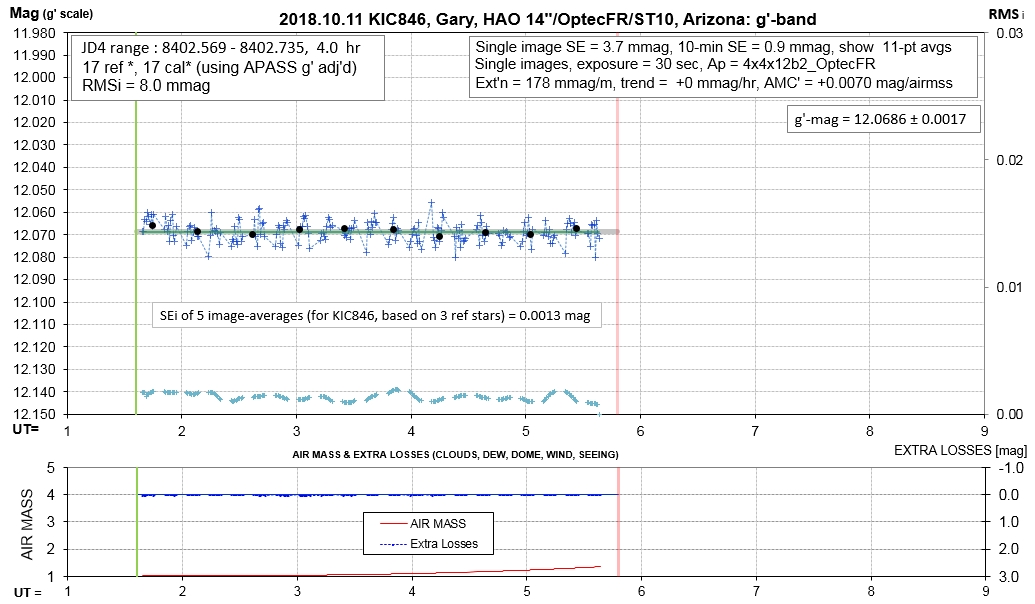
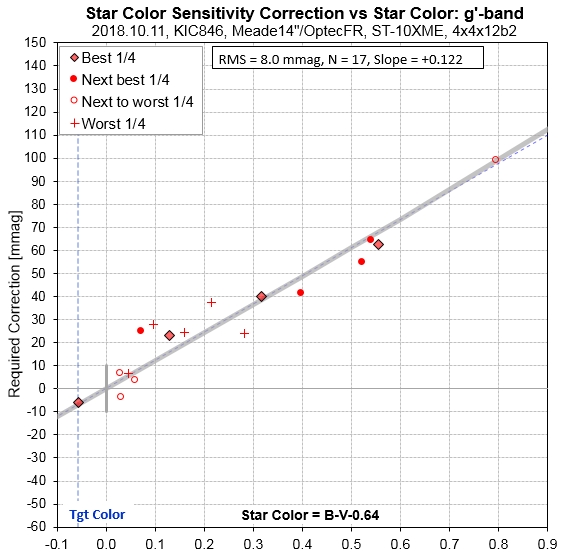
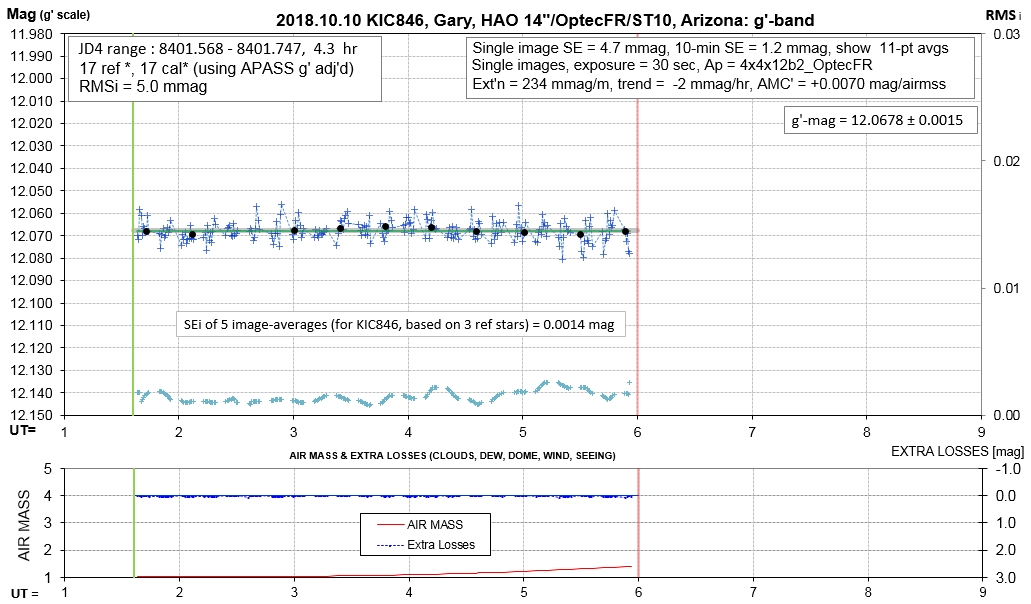
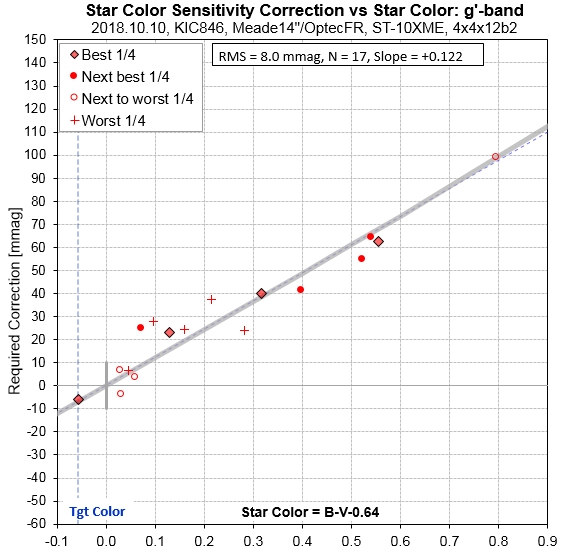
 B L G a r y at u m i c h dot e d u
Hereford
Arizona Observatory resume
B L G a r y at u m i c h dot e d u
Hereford
Arizona Observatory resume